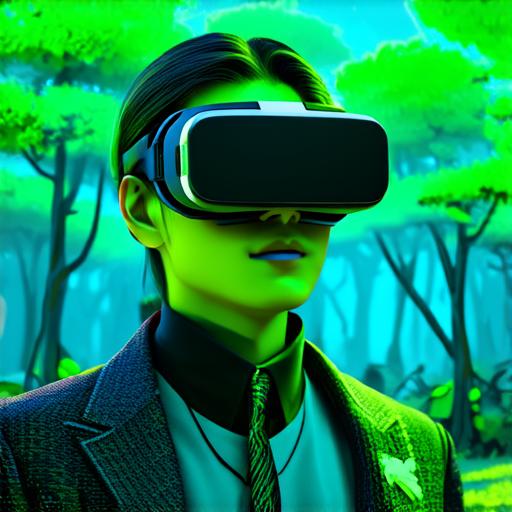
What are the responsibilities of a virtual reality developer?
Virtual reality (VR) is an exciting new technology that offers developers endless possibilities for creating immersive experiences. However, with great power comes great responsibility, and virtual reality developers have a unique set of responsibilities that differ from traditional software developers.
Understanding Virtual Reality Development
Virtual reality development involves creating immersive experiences for users by building interactive environments that simulate the real world or create entirely new worlds. VR developers use specialized software tools such as Unity, Unreal Engine, and CryEngine to build and test their applications. They work closely with designers, artists, and other team members to bring their vision to life.
Key Responsibilities of a Virtual Reality Developer
1.
Designing the User Experience
Virtual reality developers are responsible for designing the user experience (UX) of their applications. This involves creating a seamless and immersive environment that engages users and keeps them coming back for more. Developers must consider factors such as usability, accessibility, and ergonomics when designing the user interface.
2.
Creating Interactive Environments
Virtual reality developers are responsible for building interactive environments that allow users to interact with virtual objects in a realistic way. This involves creating complex algorithms and coding systems that simulate physics and other real-world phenomena. Developers must also ensure that their applications run smoothly and efficiently on different hardware platforms.
3.
Optimizing Performance
Virtual reality applications require high performance to provide an immersive experience for users. Virtual reality developers are responsible for optimizing the performance of their applications by reducing load times, minimizing lag, and improving overall frame rates. This requires a deep understanding of computer systems and programming languages such as C++ and Java.
4.
Testing and Debugging
Virtual reality development involves extensive testing and debugging to ensure that applications are working correctly and providing an enjoyable user experience. Developers must be able to identify and fix bugs, optimize code, and make other performance improvements quickly and efficiently.
5.
Collaborating with Teams
Virtual reality developers work closely with designers, artists, and other team members to bring their vision to life. They must communicate effectively and collaborate with others to ensure that everyone is working towards the same goal. This requires excellent interpersonal skills and the ability to work in a fast-paced, dynamic environment.
Real-Life Examples of Virtual Reality Development
One example of virtual reality development is the creation of interactive games for consoles and PCs. Games such as “Beat Saber” and “Job Simulator” require developers to create immersive environments, optimize performance, and test their applications extensively to ensure that they provide an enjoyable user experience.

Another example of virtual reality development is the creation of educational applications for schools and universities. These applications must be designed with a focus on learning outcomes and must be optimized for use in a classroom setting. Virtual reality developers working on these projects must have a deep understanding of pedagogy and instructional design to create effective and engaging learning experiences.
Expert Opinions
According to Dr. David Eagleman, a renowned neuroscientist and author of “Incognito: The Secret Lives of the Brain,” virtual reality development has the potential to revolutionize the way we learn and experience the world.
“Virtual reality offers an unprecedented opportunity for learning and exploration that can transcend the limitations of traditional media,” he says. However, Dr. Eagleman also warns that virtual reality development requires a high level of expertise and attention to detail.
“Creating immersive environments that accurately simulate the real world is no easy task,” he says. “Virtual reality developers must have a deep understanding of computer science, neuroscience, and cognitive psychology to create effective and engaging experiences.”


